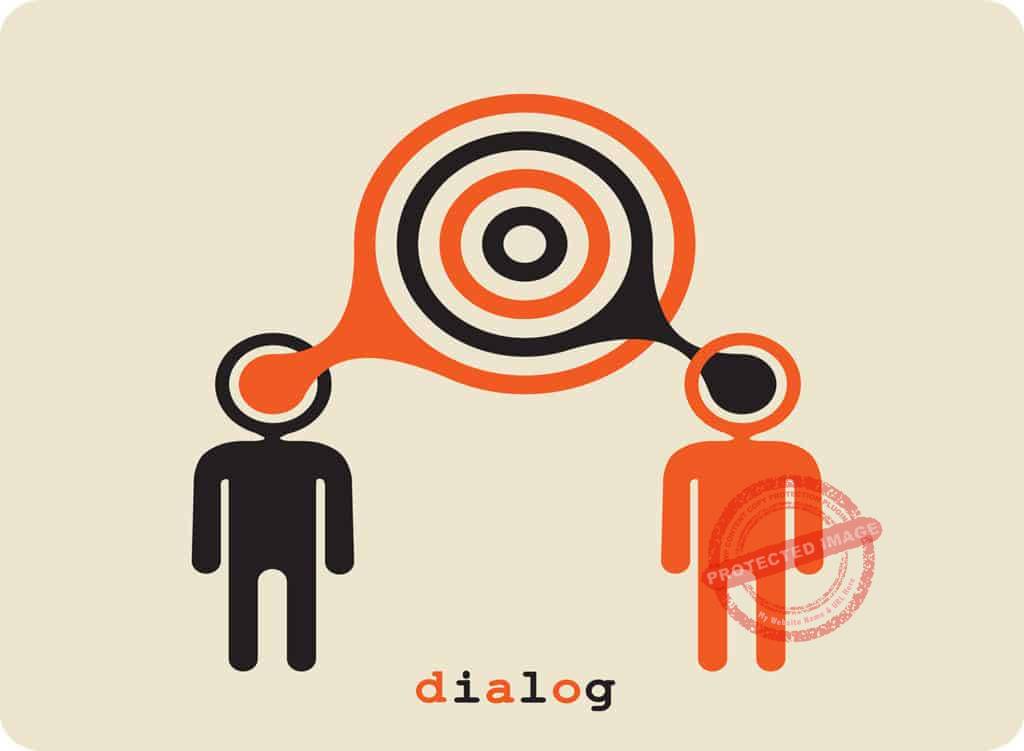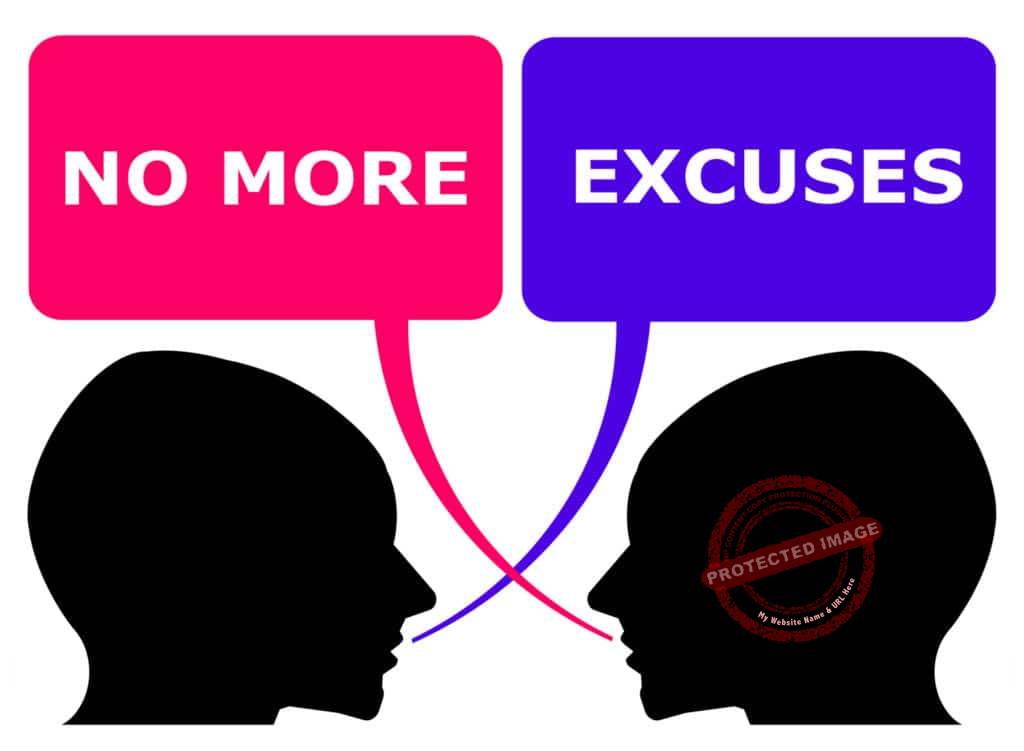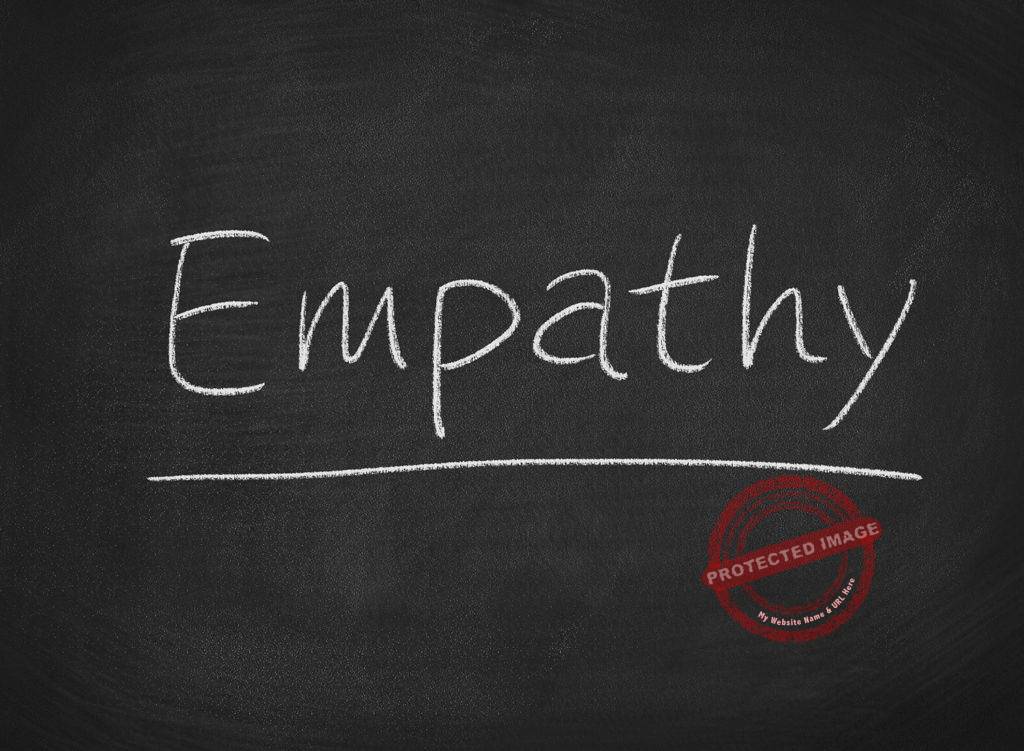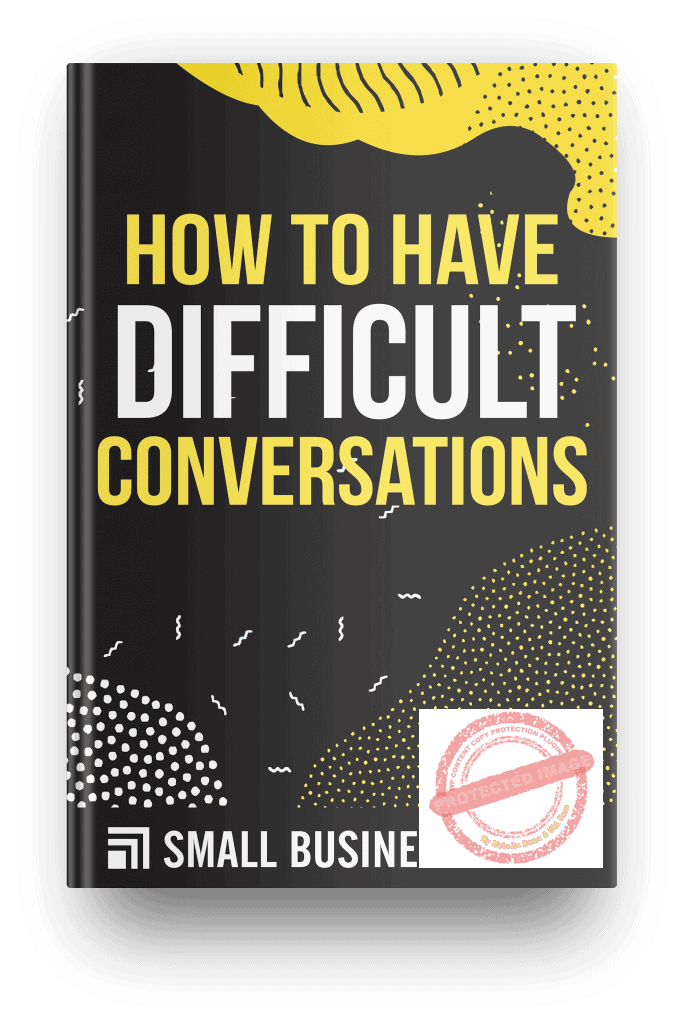Ever been involved in a conversation where you wished you could just melt away for want of knowing how to steer it positively? Everyone dreads difficult conversations. So it is important to learn how to have difficult conversations especially in cases where you have to deliver bad news or discuss a dreaded issue.
Whether you’re disciplining an employee for poor performance or firing someone, dealing with difficult conversations at work is never easy.
Business leaders frequently experience such situations.
For some, it’s challenging to talk about delicate subjects with an employee.
To get used to it and to refrain from making someone feel bad, you have to employ the best ways that can turn difficult conversations into productive and painless tête-à-têtes.
Difficult Conversation Scenarios

The following are some of the most difficult conversations at work.
They are considered tough conversations for both business owners and employees.
- Asking for a raise
- Giving negative feedback
- Telling bad news
- Firing someone
- Transitioning your employee
- Asking for a favor
- Confronting someone
- Talking about frustrations at work
- Making decisions regarding finances
- Raising an issue with someone who has authority
Having Difficult Conversations

There are six stages in any difficult conversation.
All will be covered in the following section.
You’ll also learn about the skills and strategies that can help you participate in tough discussions effectively.
Recently, researchers studied business owners who are successful in managing difficult conversations. They discovered that such people are also good at maintaining relationships and solving problems.
Below, you will learn the strategies for mending strained relationships and dealing with stressful situations, as well as how to have a difficult conversation properly.
How To Start A Difficult Conversation: Six Steps
1. Think First

Before engaging in a difficult conversation, there are some things you have to consider.
These will help you determine how to start a difficult conversation.
- Do you have other ways to solve the issue?
- Is it best to just let it go?
- Do you think the issue is important enough?
- Is your relationship with your employee at stake?
- Will the risk be greater than the gain?
2. Invite The Concerned Employee To Participate

Now that you know why you must initiate a difficult conversation, it’s time to work on your opening statement.
Your opening statement can make or break the conversation.
It’s hard to recover from a poorly delivered and poorly crafted opening statement.
It can be viewed as either a threat or an honest invitation.
This is the reason why it’s important to refine and rehearse your invitation.
It should deliver exactly what you want to convey.
How you invite your employee can influence the result of the conversation.
When dealing with difficult communications, don’t forget to include the four things below in your opening statement:

- Tell your employee why it’s important to move forward.
- Share your view of the issue.
- Ask them to share their story or perspective.
- Describe the purpose of the conversation.
The second to the last statement is the most important of the four.
As a leader, you have to be fair.
You will not know the truth if you do not let your employee share his or her own side of the story.
By asking the other person’s perspective, you can see a bigger picture of the story.
Note, always seek the views of people involved in an issue in order to come up with a just decision.
So, invite the other person to express his or her perspective by asking the question.
3. Create The Core Of The Conversation

The third story or the core of the conversation moves a difficult discussion forward.
Your employee has his or her story, this is the first story and you have yours.
Yours is the second story
It’s crucial to not dwell on views and excuses.
Move the discussion to a positive direction after listening to the response of the other person.
Shape the third story.
The third story should describe the problem.
It should also detail its effects on the company.
By creating a third story, your employee will feel that his or her side has been acknowledged.
End the third stage with a question.
Ask your employee how he or she will move forward.
4. Listen Deeply

This is the fourth stage of a difficult conversation.
Listen to your employee’s response, and listen well.
At this stage, you should ask open-ended questions.
You must also use active listening skills.
Doing these will encourage the other person to formulate a full, meaningful answer using his or her own knowledge.
You should also ask targeted questions from time to time so that the employee can clarify his or her answers.
This also helps avoid misinterpretation and misunderstanding.
You have to listen with all your senses.
Listening deeply involves giving full attention to the speaker.
However, acknowledging what you hear does not mean that you have to agree with it.
Your decision must be based on facts, knowledge, and experience.
Do not rely on your emotions.
5. Speak With Conviction And Clarity

In stage five, you are finished with listening to your employee’s perspective and plans.
So, it’s time for the other person to hear your side.
Stage five involves elaborating your responsibilities as a leader.
So, you must talk about the following:
- How the problem affects your other employees
- How you perceive the issue
- What traits you value
- What you expect from the other person
You have to be honest.
You may have to say words that can hurt your employee. If you have to do this, be sure to follow the critique with a solution.
6. Solve Problems Collaboratively

After stage five, you have to formulate solutions.
You and your employee should focus on problem-solving.
Both of you must talk about the present and the future.
At this stage, refrain from discussing past actions.
Brainstorming is also a good way to formulate strategies.
Discuss the issue with your employee.
Present your solutions and, ask how he or she feels about them.
Remember that you’re the leader, so you must assert that the other person should fulfill your expectations.
Offer as many options as possible so that the employee won’t feel pressured.
Stress and work pressure negatively affect employee performance.
This is the last thing that you want to happen.

Brainstorming excludes discussion and judgment.
It involves generating and recording of ideas.
After the brainstorming session, take a step back and discuss with your employee the options both of you have generated.
You should pay attention to the needs of your employee and to your own.
You might get stuck at this part. If you do, consider the questions below:
- What is missing?
- Have you considered all the possible options?
- Why are you stuck?
- What changes should you make that can satisfy both of your needs?
- Are you being too lenient?
At the end of this stage, both of you must reach a compromise.
The goal of this stage is to come up with a workable and fair solution for all parties involved.
Clarify what you are expecting from your employee and remind him or her that there will be a follow-up conversation in the future.
You may need to schedule several meetings to ultimately solve the problem.
How To Handle Difficult Conversations
Be Direct

When engaging in a professional conversation, get to the point quickly.
Refrain from telling too much negative feedback or excessive compliments.
The feedback sandwich or sandwich feedback method lessens the impact of a discussion.
It also muddles what is really being conveyed.
If you need to tell your employee that he or she needs to improve his or her performance, don’t be coy.
When having difficult conversations with employees, tell them what needs to be done in a non-demeaning way.
Get to the point quickly, but choose your words wisely.
Even if you’re the boss, remember to always respect your employees.
Respect begets respect.
Don’t talk harshly and make someone lose their dignity.
It won’t increase productivity.
Be Specific

Be precise and be honest.
Explain to your worker why you called him or her to your office.
Discuss the issue clearly.
It’s best to point out what really happened.
For example, Jane is the owner of a BPO company and she saw that John, the company’s human resources manager, was cheating with his time.
Clark did not like what he saw.
So, he called John to his office.
His HR manager has been with the company for years, and it was his first offense.
Even with this, Clark told John what he knew.
He also told John that he wasn’t happy with it.
In the end, the business owner gave his employee another chance.
He also advised John to refrain from doing it again because there would be consequences.

When having difficult conversations with employees, you have to assert your authority without humiliating them or coming across as arrogant.
Offer many examples, and ask questions.
Also, remember that the discussion between you and your employee should stay on a single topic.
Plan The Conversation

Every time that you have to talk with an employee about a delicate subject, you have to be confident.
By planning out the discussion in advance, you know what to say.
You won’t stutter.
And your employee will perceive that you know what happened or what he or she did.
By anticipating how your employee might react, you can personally formulate responses so you can be ready with whatever he or she might say.
This will enable you to deliver a concrete critique and answer their questions promptly.
Make An Outline

The first thing that you should do before engaging in difficult communications is to make an outline.
This is also part of planning.
Making a sketch or summary allows you to establish the basic points for the upcoming conversation.
First, you should tell your worker why he or she has been called to your office.
Next, discuss the issue, then lastly, tell your employee what you expect from him or her.
During the conversation, the employee may make excuses or tell you the root cause of the problem.
You should also be ready for such instances.
Provide Solutions

Once you’ve pointed out the problem, you must offer solutions.
It’s also advisable that you encourage the employee.
For many people, it’s hard to deal with criticism.
Some may feel down about it. Some may not take it seriously.
According to studies, business owners can boost an employee’s morale by saying encouraging words.
By offering solutions, they can help solve the root problem.
When you do these after delivering a critique, you will help your employee get over from the experience.
Even if you fired an employee, you should still encourage him or her.
Manage Your Emotions

During any professional conversation, you must be calm.
Keep your tone professional.
You must display the following traits:
- Confidence
- Sincerity
- Courtesy
- Formality
- Avoid unnecessary jargon
If you become emotional, your employee may feel so, too.
According to studies related to psychology, humans are naturally empathetic.
When emotions take over, they can cloud your judgment and affect the emotions of the person you’re talking to.
You might also say unnecessary and hurtful words.
You may blurt out words that can really hurt your employee’s feelings.
When you go too far or when your employee has a short temper, a heated argument may occur.
This is unproductive for you, your employee, and the business.

You might also face instances where you need to warn or advise an employee who is also a friend.
This is probably harder than other difficult conversation scenarios.
You may think that your relationship with your friend is at stake if you try to reprimand him or her.
As a leader, you have to disregard relationships when your business’ productivity and future are on the line.
If the person in question is really your friend, he or she will understand your point.
In such situations, remember to manage your emotions.
Also, make your friend understand the value of the conversation.
If everything is done in a calm and non-personal way, you will see that delivering a critique is not that hard.
When you try to suppress your emotions during tough conversations, you can clearly convey the points in your outline.
Be Empathetic

It’s recommended to be stoic when dealing with difficult conversations.
By doing so, you can easily control your emotions and you appear professional.
However, it doesn’t mean that you must not empathize.
Nobody is perfect.
Everyone has weaknesses and problems.
When a previous outstanding employee fails to meet requirements or deadlines, he or she may have a problem.
Even though his or her actions could be affecting your business, you should talk to him or her first before coming up with a decision.
Before deciding to fire or transition a loyal or a hardworking employee, discuss the issue with that person first.
You may be able to provide a solution to the problem.

Additionally, when it comes to managing difficult conversations, you should choose your words wisely.
In the planning stage, you must think of how the other person will react to your words.
Also, during the actual conversation, always be aware of your tone of voice.
The words you use and your tone can warp the meaning of what you really want to convey.
If you intend to encourage your employee, but you sound angry, he or she will feel agitated instead of being encouraged.
But if you look relaxed and you sound calm, your message will be delivered clearly.
At the end of the conversation, tell your employee that your words or recommendations are for his or her own good.
Make your worker understand fully the gravity of his or her actions.
Encourage Questions

Questions have two purposes.
It helps your employee process your critique.
It also allows you to solidify and clarify difficult communications.
Ask your worker if he or she understands your point.
Next time you have to engage in a difficult conversation, remember the crucial conversations tips above.
More Crucial Conversations Tips On Handling Difficult Conversations

- Don’t argue about who is right or who is wrong. It’s not helpful and counterproductive to your goal.
- Refrain from thinking that the employee in question is the source of the problem. Keep in mind that he or she could really be the victim.
- Emotions like frustration and anger can muddle your thoughts.
- Acknowledge the different perspectives during a difficult conversation. Understand your employee’s story. In doing so, you can clearly see whether his or her conclusion is true or not.
- Avoid blaming the other person. Finger pointing can be demeaning and sends out a negative vibe.

- Blaming is a big issue in difficult conversations. It limits your ability to learn the truth, and it stirs up negative emotions. Blame involves recalling past actions and judging other people.
- Understand how the problem has built up, and find out all of the people who contributed to creating the issue.
- You must focus on looking for solutions and moving forward.
- To change your perspective and feelings toward a person, you must stop thinking that he or she is intentionally doing harm. As a leader, you must not be biased and you must always check your assumptions.
- If tension is building up, regroup and consider taking a break. This prevents an argument from breaking out.
Final Thoughts On How To Have A Difficult Conversation

A normal conversation can become a difficult conversation in an instant.
There are times when you have to let go of a conversation and there are times when you must not engage in one.
Use the above knowledge that you have garnered to reform your approach to having difficult conversations so that you will become a more effective leader.
When was the last time you got caught in a difficult conversation and how did you handle it?
We’d love to know!
Click on Buy Now For a PDF Version of This Blog Post
 |










